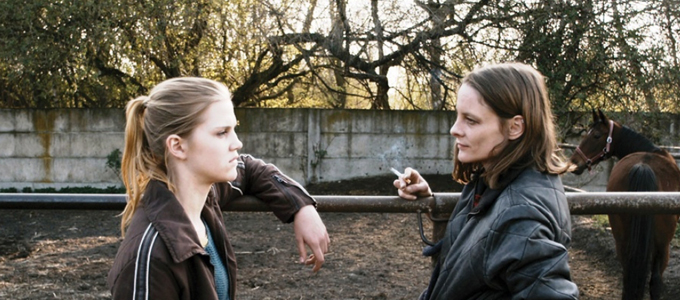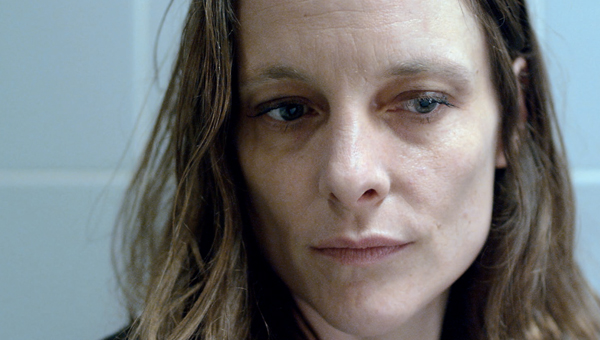
The story begins in the present day with Wanja (Anne Ratte-Polle), a middle-aged woman on parole for bank robbery, looking around the most basic of flats in Sulingen, Germany. She’s given help by the government to find a job and to begin rebuilding her life. After a failed attempt to work in a pet shop, she finds employment at a racehorse stables. There, she is the oldest person by a furlong and struggles to bond with the other stable hands, preferring to keep quiet and get on with learning the job. Wanja finally makes a friend, teen Emma (Nele Trebs) and develops an odd mother/sister/only friend relationship with her. The story questions whether Wanja can start again, or whether her life of stealing and drug taking will drag her back down.
The film is the creation of Swedish filmmaker Carolina Hellsgård. If she played cricket, her position would be an all-rounder, for she directed, wrote, co-edited and even got involved with the casting. This German speaking film is shot by cinematographer and producer Kathrin Krottenthaler. She creates a gritty realism of Germany, showing us grimy buildings, tired streets, shady pubs and diarrhoea inducing takeaway restaurants. These images of working class Germany are similar to British films, such as Shane Meadows’s This Is England (2006) or Mike Hodges’s Get Carter (1971).
The heartbeat of this film is Hellsgård’s script; with its simple and sparse dialogue, it is able to show and never tell. The creation of Wanja is excellent, a blend of strength and uncertainty. Almost all the male characters try to exploit her, and it is refreshing to see a female character hold no punches and never let them win. So often in films Prince Charming will come to the rescue, but Wanja is no damsel in distress. The use of Wanja’s relationship with animals is exceptionally crafted and expresses her as a character far better than pages of dialogue ever could. In many scenes she is either in direct contact with an animal or has one nearby. Even in connecting scenes where she walks down a street, there will be a cat skulking by or birds chattering in the trees. Wanja seems better suited to interacting with animals rather than humans, and it is with human contact that the black cloud of loneliness surrounds her.
Anne Ratte-Polle has the hallmark of a young Robert De Niro…
The subtle subplots are elegantly written; Wanja’s criminal past is only hinted at and doesn’t dominate the film. A poorer writer would have brought Wanja out of retirement for one last job. Instead, Hellsgård focuses of Wanja’s drive to get on in the world and survive. Also, WANJA’s “estranged daughter” plotline is not the main focus, only playing a small part in the story. Again, Hellsgård could have plucked those well-worn strings trying to force a contrived emotional reaction from the audience, but she avoids cliché like a Cayman Islands bank account avoids tax.
A mention also needs to go to the poised acting of Anne Ratte-Polle as the protagonist. That hands stuffed in her jacket pockets walk she struts has the hallmark of a young Robert De Niro. She is able to switch from vulnerable loner to attacking snake with lightning speed. Yet there is still raw emotion under that tough outsider’s skin, like when she talks to her daughter on the telephone for the first time in a long while. Nele Trebs’s portrayal of Emma is solid as she moves from the sullen teenager interested in drinking and boys to the strung-out, messed up old soul who has seen too much far too young.
This is a great film, with a protagonist not yet ready to give in, a masterly shot urban landscape and an eye on keeping the viewer engaged throughout. Hellsgård is a skilled filmmaker who understands story and keeps it at the forefront of her film.
WANJA screens on 9 September at 18.30 at Cambridge Arts Picturehouse.
httpvh://youtu.be/Y59GsLnEXvo

